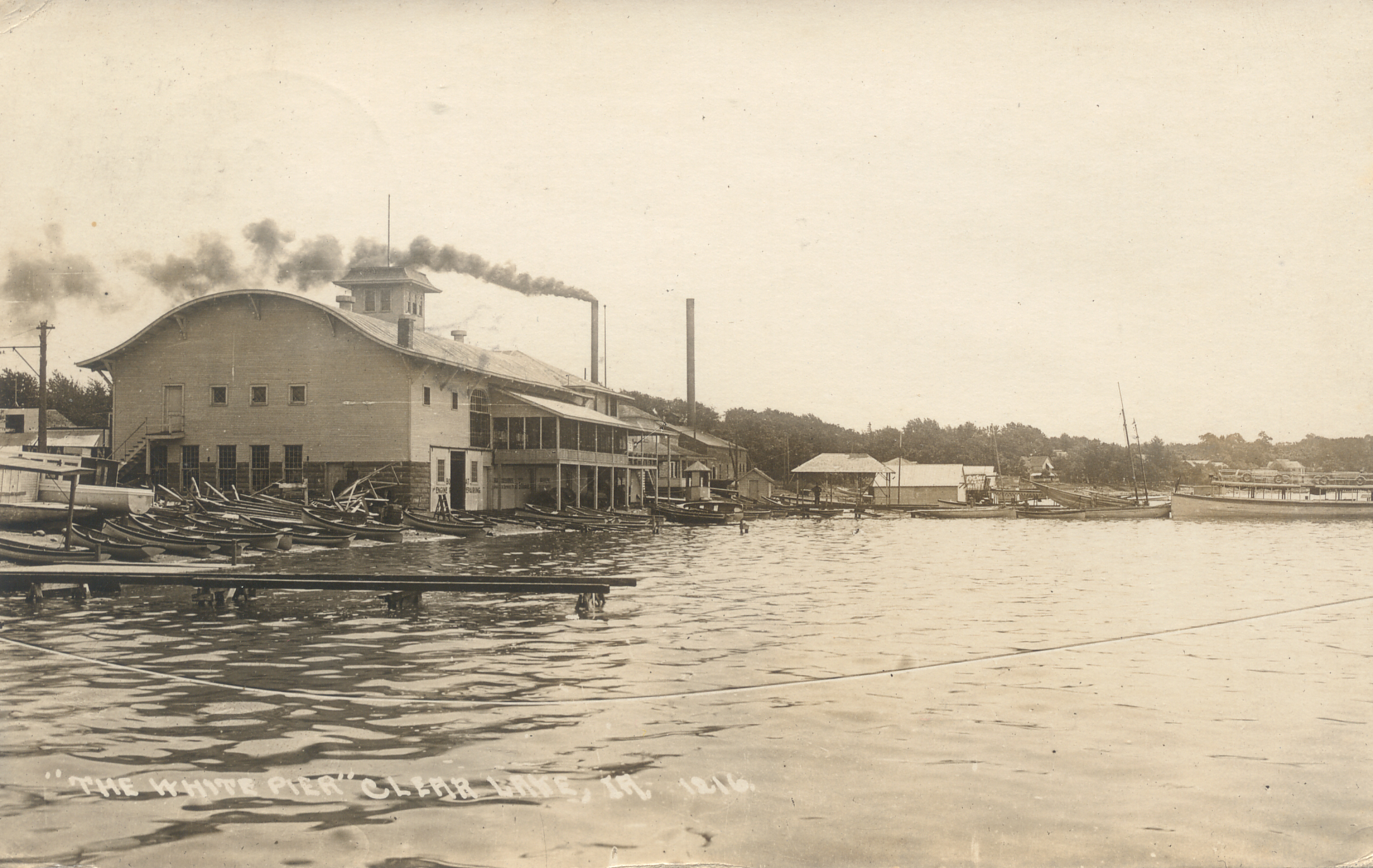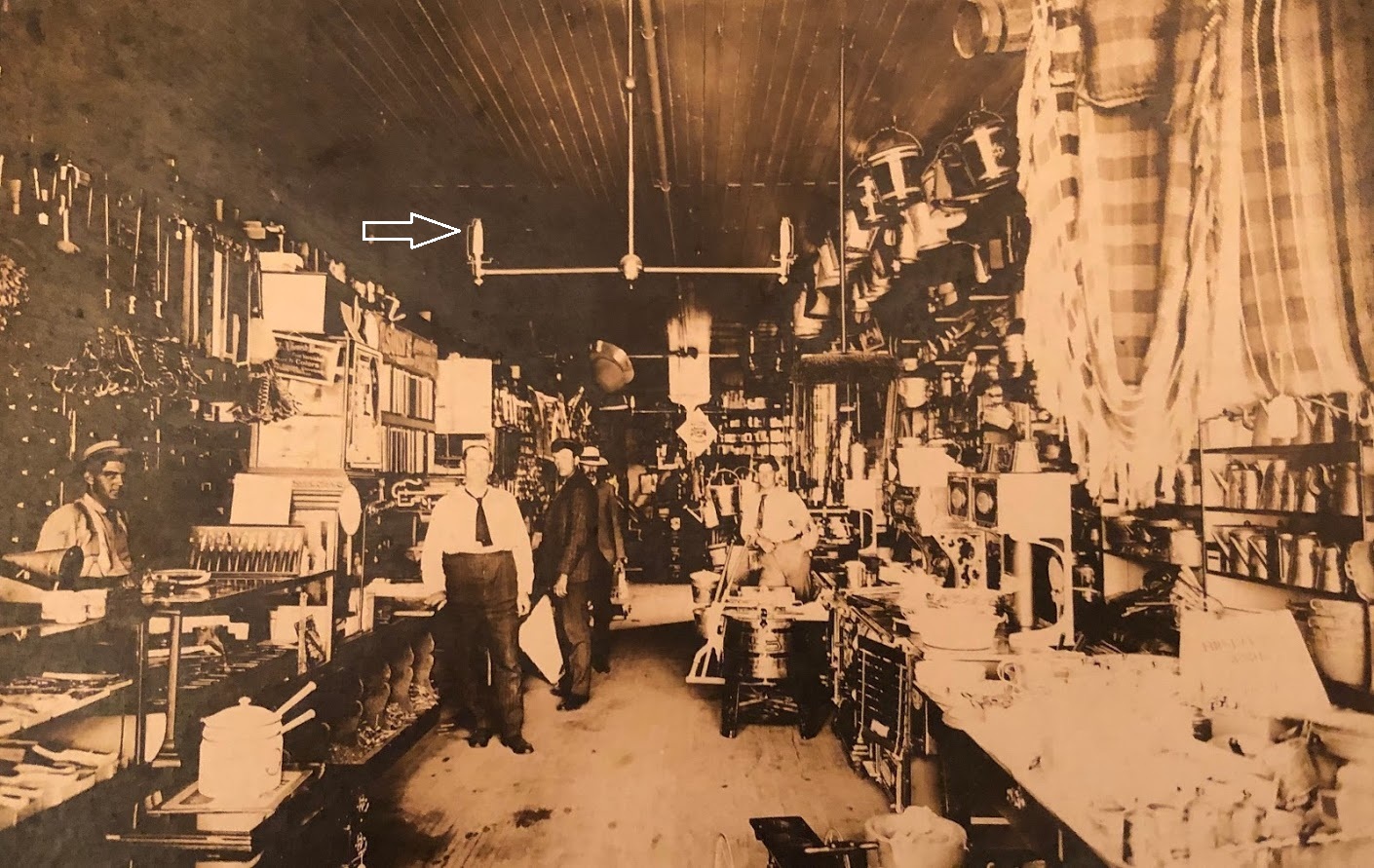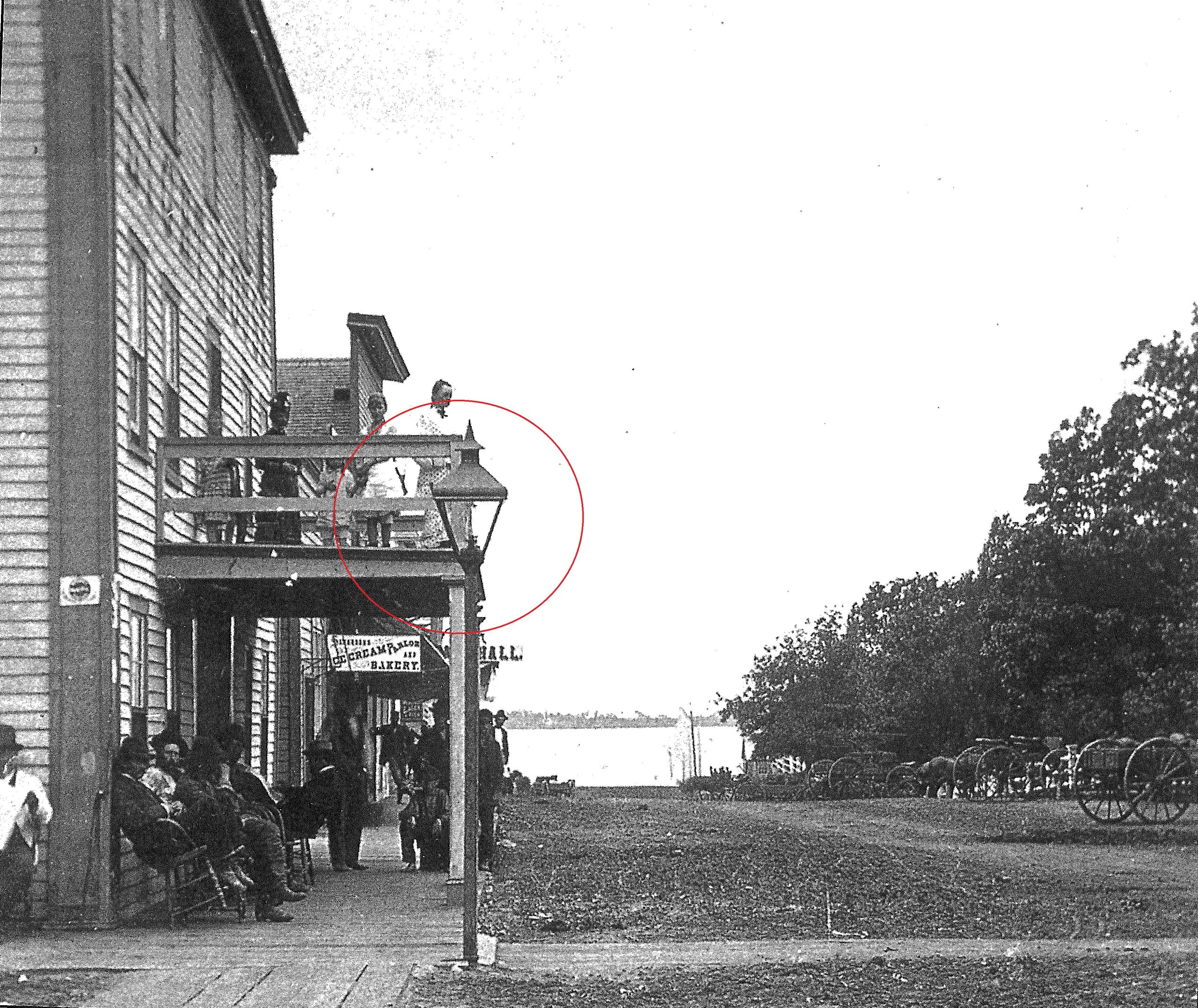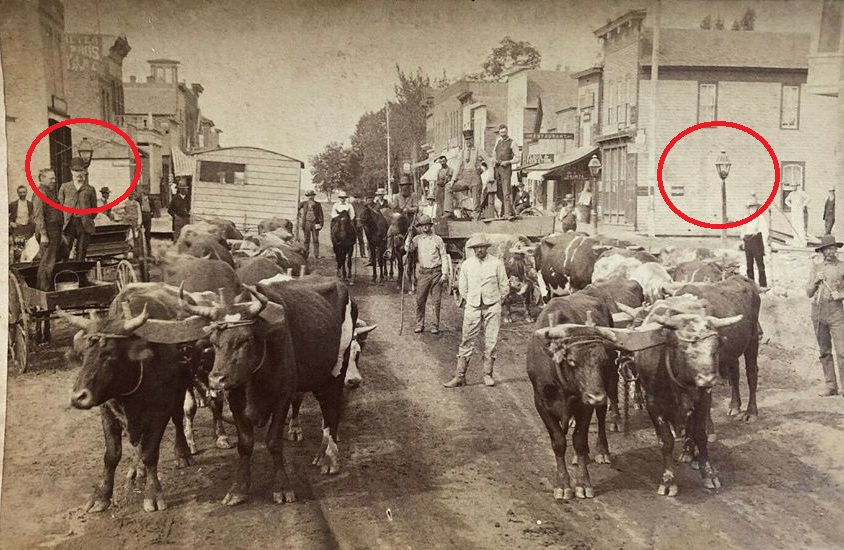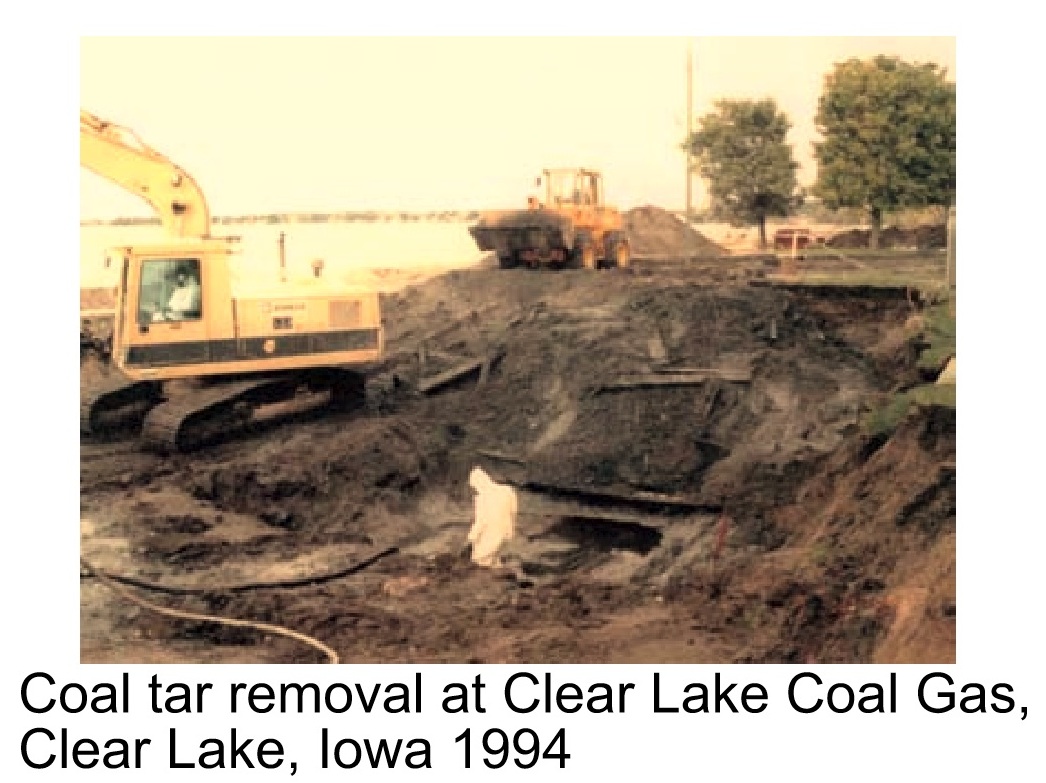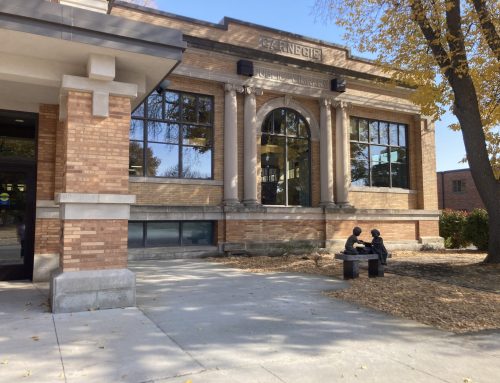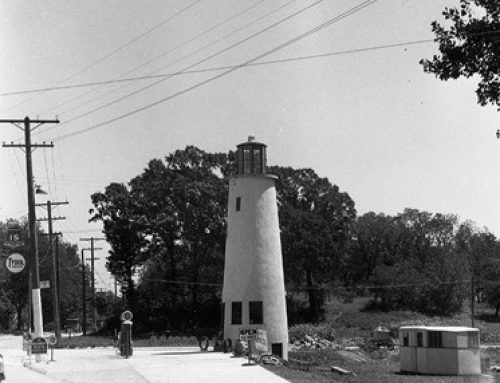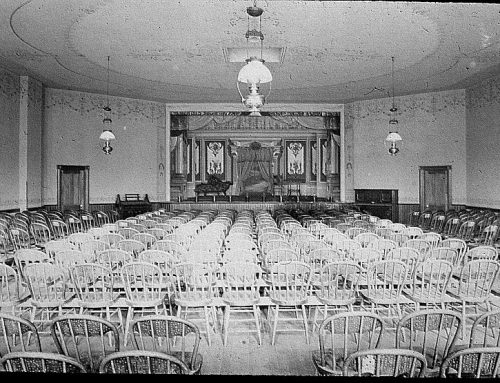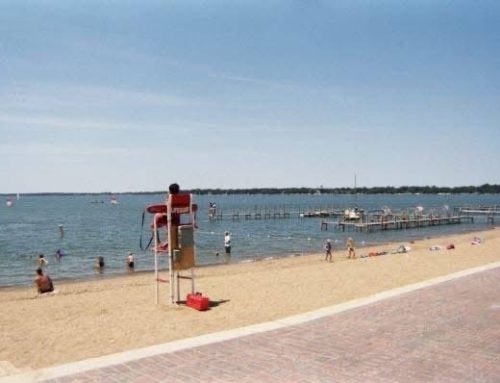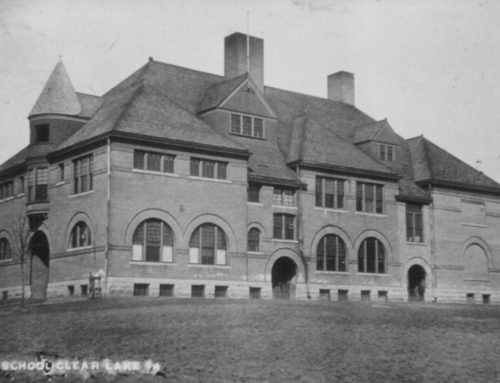Before electricity arrived in Clear Lake, homes and businesses had gas lighting. The gas came from burning coal in an oxygen deficient atmosphere, collecting the gas and “cracking” it (sending it through a water mist to increase luminosity), storing it in gas holders, then piping it out to customers.
Clear Lake’s gas plant was located where the City Water Treatment Plant is at 110 1st Avenue South. The process produces coal tar and liquid condensate byproducts which are full of chemicals harmful to the environment. As was the practice at the time, these byproducts were buried at the gas plant location. The gas plant is recognizable in the photos by its chimney(s) and black smoke.
The interior photo is circa 1880 Knutson (later Miller) Hardware (401 Main) showing the gas lamps. The gas lights used thorium mantles as a substrate upon which the flame would burn.
There are a couple photos showing Clear Lake’s gas streetlights; the person who tended them would have been the City lamplighter.
When the water treatment plant was built any contamination present within the building footprint was removed. It is not clear where the coal tar went, but the liquid condensate was still in the ground and had to be pumped out. They were clever enough not to pump it onto the ground nearby where it would run into the lake (which was the City water supply at that time) so they piped it up to the top of the hill at Main and 3rd, which is a drainage basin divide. Drainage southwest of that location flowed into the lake, and all drainage northeast of there flowed easterly, eventually into the Outlet which ultimately reached the Winnebago River.
This information came from my grandfather, Roscoe Miller, who said he watched the malodorous liquid go into a storm drain for several days.
This was all perfectly legal, people could dump anything they wanted into waterways until the Clean Water Act of 1972.
There was still some remaining coal tar and the DNR made the City dig it out in 1994.
In 1977 the State ordered that the City could no longer draw water from the lake, and the City was obliged to drill wells.
Written by David Miller.

